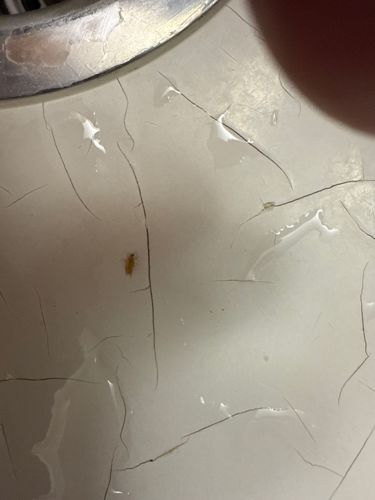Booklouse
Scientific Name: Psocid (general term for species within the order Psocodea, specific species identification without microscopic examination is difficult)
Order & Family: Psocodea (formerly Psocoptera), often Liposcelididae (barklice and booklice) or other families within Psocodea.
Size: Typically 1-2 mm in length.

Natural Habitat
Damp, humid environments such as bathrooms, kitchens, basements, old books, stored foods, and wallpaper.
Diet & Feeding
Booklice feed on mold, mildew, microscopic fungi, dead insects, starch-based materials like book bindings, wallpaper paste, flour, and cereals. They do not bite humans or pets.
Behavior Patterns
Booklice are typically found in damp, dark, and undisturbed areas. They are fast-moving when disturbed, but otherwise tend to remain still. They reproduce rapidly, especially in favorable conditions (high humidity, ample food). Their lifecycle is relatively short, from egg to adult in about 2-4 weeks, depending on species and conditions.
Risks & Benefits
Potential risks include contamination of stored food products and damage to books or other paper products due to feeding on mold or starch. They are generally harmless to humans, not transmitting diseases. They are sometimes an indicator of high humidity issues, which can lead to mold growth.
Identified on: 8/24/2025